Asia Just Got a New Luxury Airliner. Here’s What It’s Like Onboard.
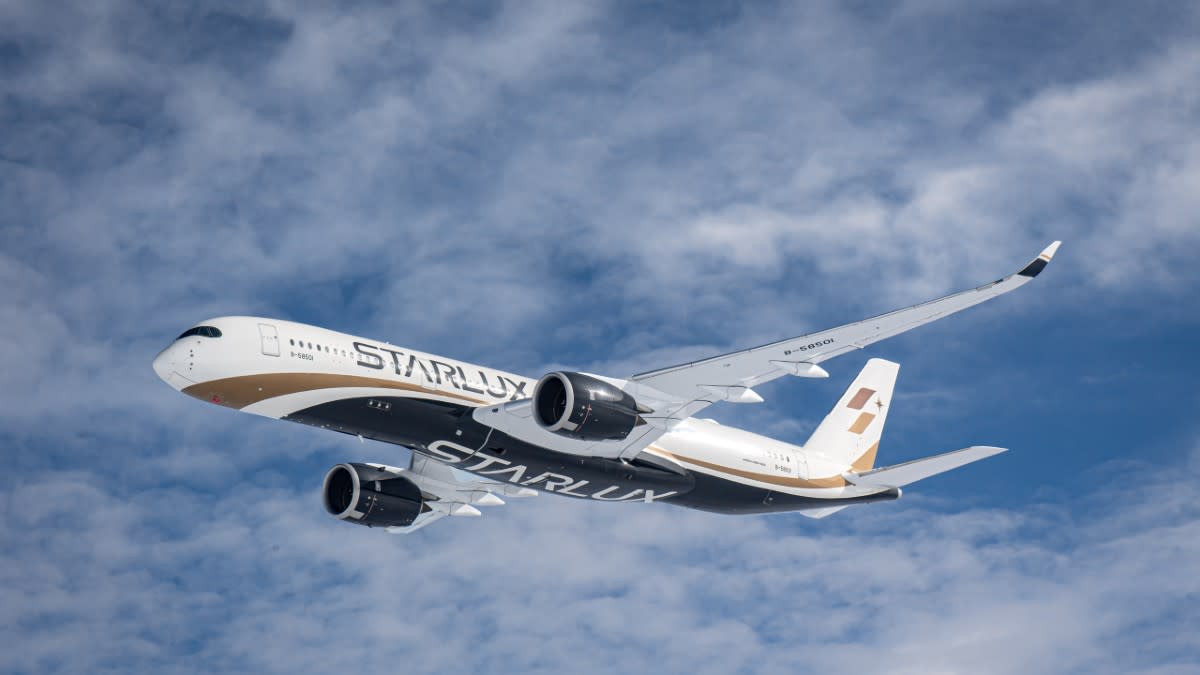
The next big luxury airline in Asia?
That’s a lofty ambition with competition like Cathay Pacific and Singapore Airlines. But Taipei-based Starlux, which is already billing itself as the “Emirates of Asia,” thinks it’s ready to fill those big, long-established shoes. The startup believes that combining a premium onboard experience, new aircraft, and a network of routes connecting North America with the Pacific could be key to its ascent.
More from Robb Report
La Compagnie's All-Business-Class Plane Now Flies Directly From Newark to the Caribbean
Airlines Are Betting Big on Premium Seats, and Their Planes Are Changing as a Result
JetBlue Has the Best First and Business Class in the U.S., a New Study Says
The fledgling carrier flew its first flight within Asia in 2020. But its founder, Kuo-wei, is part of the family that owns EVA, Taiwan’s second largest carrier after China Airlines, so he knows how to run an airline. Last year, Starlux launched direct flights from its first U.S. gateway, Los Angeles International Airport (LAX), and has since added routes from San Francisco to Taipei. I was one of the first to experience the new round-trip service from San Francisco to Taipei.
“We aim to make flying with Starlux a highly anticipated experience that engages and satisfies all five senses—smell, taste, hearing, touch, and sight,” KW Nieh, the airline’s chief communications officer, told Robb Report, adding that its Airbus 350-900s have the “latest technology, with the finest cabin seating available.”
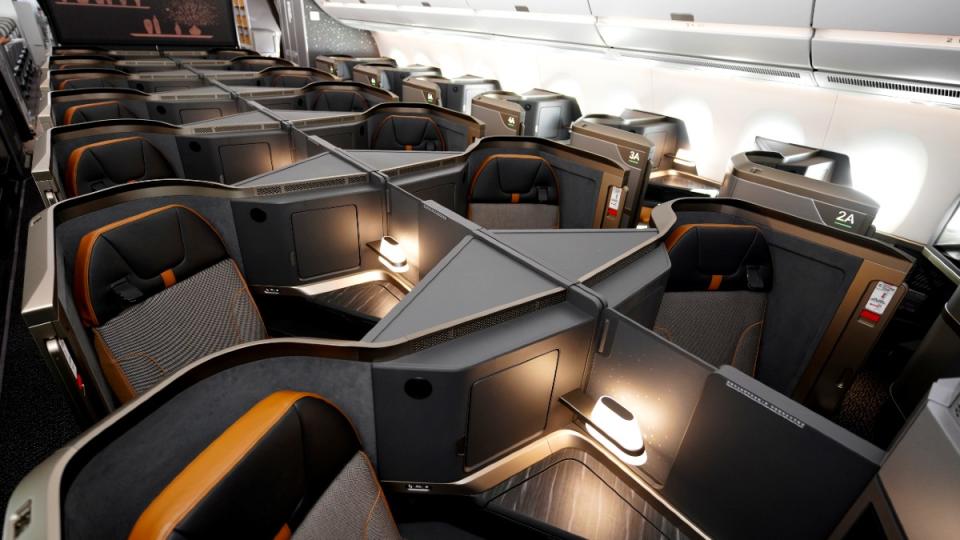
With an intro like that, it’s impossible for the hype detector not to go off. Did the experience live up to the hyperbole? It depends on which section you’re in. The four cabins are divided between four seats in first class, 26 in business, 36 in premium economy, and 240 in economy. Seats in first and business classes are arranged in a reverse herringbone layout in a 1-2-1 configuration. Each is angled away from the aisle with a fully closing door for more privacy. That was good for me since I sat in 3A in business class.
The first impression of the cabin is positive. Starlux worked with BMW Designworks to come up with a neutral-toned interior with details that include leather headrests, woven-fabric seats, and rose-gold embellishments in first and business class. “The myriad of textures are meant to invoke a sense of walking into a home,” says Nieh. The same color scheme is carried through the entire cabin, all the way back into premium economy and economy.
Starlux also went all in with a “signature scent,” reminiscent of wood, leather, iris, and violet, called “Home in The Air” from Taiwanese perfumer P. Seven. The scent permeates the cabin in subtle ways, but it’s also used in its lounges and ticket counters. It’s meant to add an element of aromatherapy to the flight.
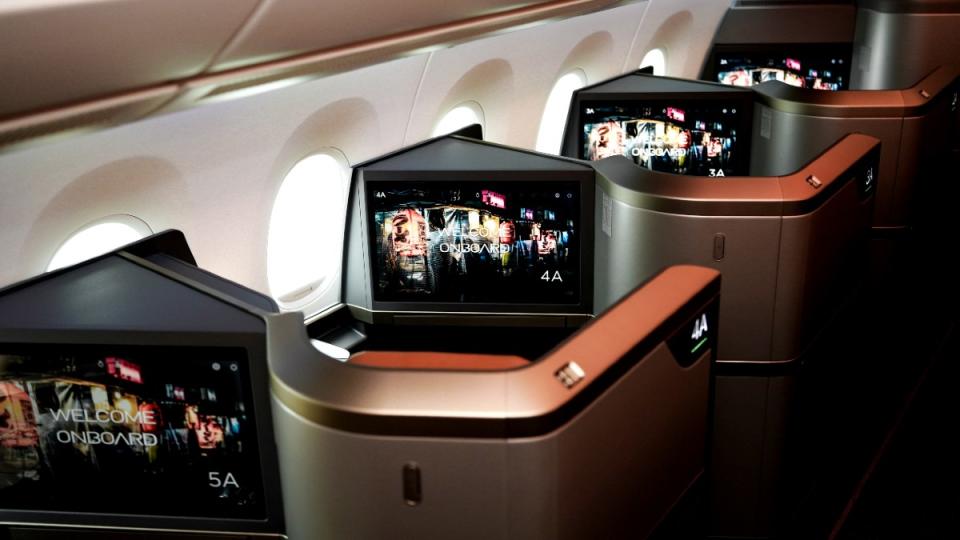
My seat near the front of business class was an Elements suite, a new pod design by Collins Aerospace that’s an upgrade from business-class seating on other airlines, claiming more storage, a large footwell, and USB-C charging, wireless charging pads, and Bluetooth capabilities. Each seat also has a 4K, 24-inch TV screen, a built-in massager, automatically tinting windows and a “Zero-G” seat function to decrease fatigue on long-haul flights. Fast Wi-Fi is complimentary for first and business-class passengers.
On both the inaugural and return flight, the business class section was nearly full, with a few empty seats, while the rear sections also seemed to be packed.
After take-off on the return flight from Taipei to San Francisco, I quickly came to appreciate the partnership between the airline and Michelin-starred chef Lam Ming Kin (only available on outbound Taipei flights). The airline touts this catering partnership, which offers an exclusive contemporary Asian menu to passengers in business and first class. The perfectly seared Waygu was cooked medium rare and tasted as if it was fresh off the grill—even though we were cruising at 35,000 feet. Each course was plated individually during the meal service. The flight attendants were pleasant and professional.
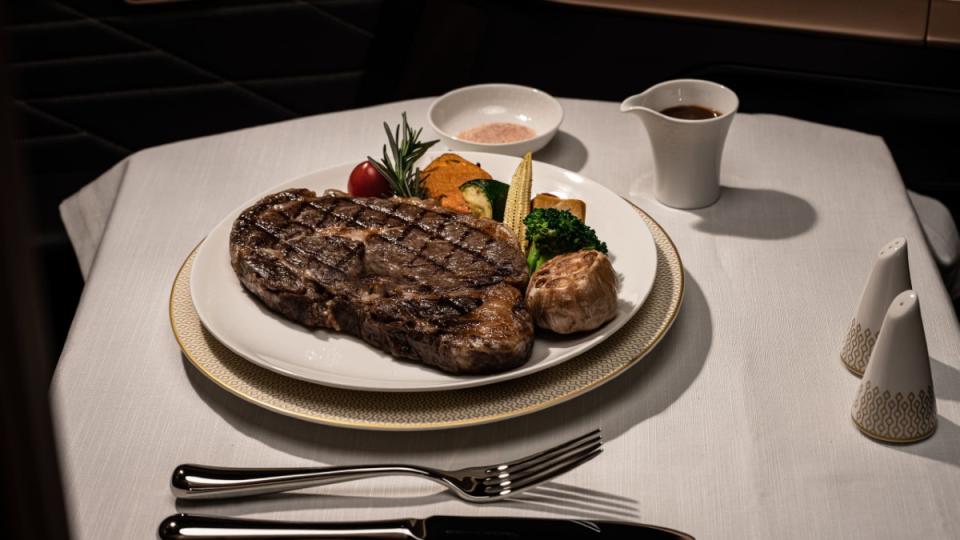
After dinner, the staff provided Starlux-branded pajamas, a mattress pad, slippers, noise-canceling headphones, a pillow, and a plush blanket to make the long journey comfortable. I managed to sleep undisturbed for about half of the 14-hour flight. The closing sliding door added an extra element of privacy that made sleeping easier. The entertainment selection included the latest movie and TV offerings, along with music and an interactive flight map.
It’s hard to judge an airline on two flights, but my experience in business class was a positive one. The crew, obviously putting forward their best effort during the inaugural flight, was first-rate, the food was excellent, and the seating worked well considering the length of the trip.
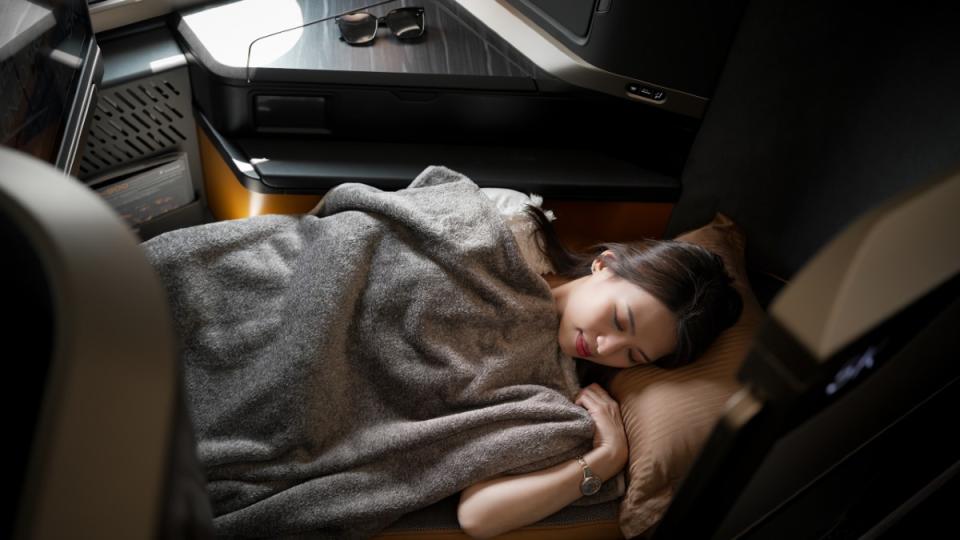
My only complaint were the lounge offerings. The airline recently opened a gorgeous new lounge in Taipei but was still operating out of partner lounges that did not live up to the luxury experience on the aircraft. The lounges were crowded, with limited seating and food and beverage options. While the airline’s new lounge in its home airport of Taipei looks stunning, the brand needs to work on its pre-departure offerings in its U.S. airports.
The airline’s new service from San Francisco to Taipei is now operating three times per week. The expansive route network in Asia is one of the main draws of flying Starlux—especially if you need to make a connection. The brand plans to launch one new U.S. route per year, and while it has a partnership with Alaska Airlines, it’s not clear if it will align itself with top-tier international airlines. For a round-trip business class seat, prices start at around $5,000, with connections to other parts of Asia.
Best of Robb Report
Sign up for Robb Report's Newsletter. For the latest news, follow us on Facebook, Twitter, and Instagram.

 Yahoo Lifestyle
Yahoo Lifestyle 
